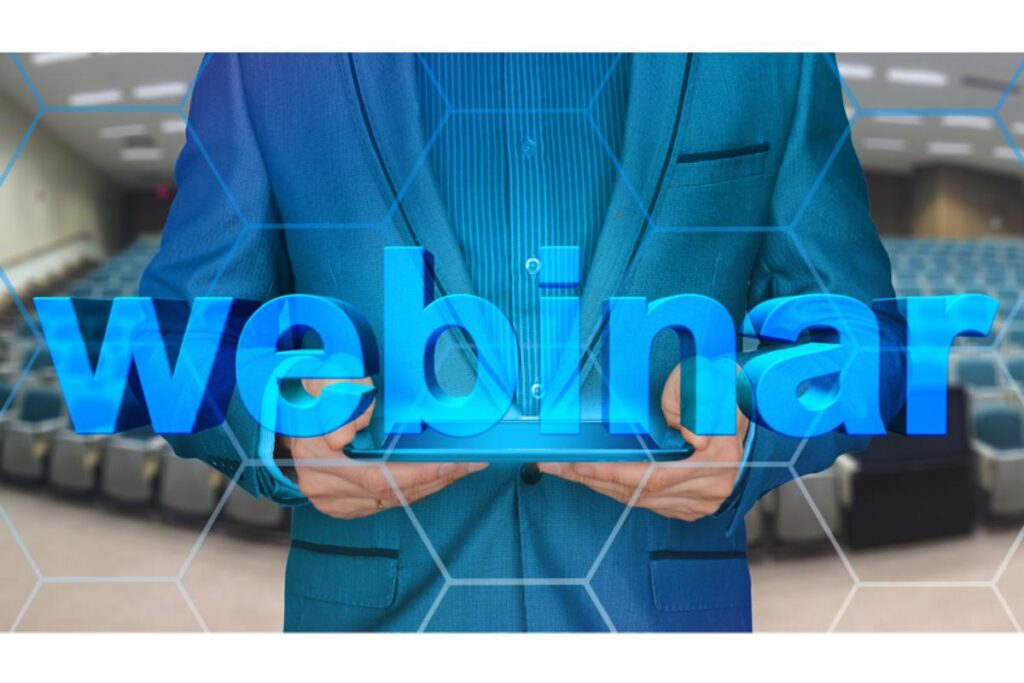Webinars are crucial to conveying knowledge, training, and engaging online with businesses, educators, and individuals who want to chat with a mass audience virtually in the digital age.
What is a webinar? A webinar is a play on the words web and seminar; hence, it is a seminar that takes place online and can be accessed from anywhere in the world as long as you have an internet connection. Webinars enable real-time interaction between hosts and participants, so they are well suited to presentations, workshops, or online training sessions. So, what allows webinars to be so successful, and how do they function?
Key Features of Webinars
Webinars are not similar to traditional videos or online presentations.
- Live Interaction: Webinars are usually held live to enable real-time interaction between the host and the participants. This level of interactivity is particularly appealing to many participants and allows them to ask questions, contribute, or participate in polls or quizzes.
- Multimedia Content: Webinar platforms also usually enable a variety of multimedia, such as video, slides, documents, and interactives like whiteboards. Such diverse content gives the presenter plenty of scope to build an immersive and interactive experience that appeals to different kinds of learners.
- Audience Engagement Tools: To better engage your viewers, they offer Q&A sessions, chat boxes, and polling features. These tools help the host gauge participants’ interests, answer questions on the fly, and make minor adjustments to content based on audience reaction.
- Recording Options: Although standard webinars are generally live, some platforms will permit you to record and provide the video to those unable to attend the event. This adds value to the webinar, making its reach and lifespan more flexible.
- Screen Sharing is another core feature that allows presenters to show their computer screens to the audience. It is beneficial for demos, tutorial content, or any presentation requiring a lot of visuals.
- Attendance Analytics: Webinars offer attendance counts, engagement rates, and participation trends. This allows hosts to measure the success of their webinars and plan for future events based on analytics.
How Webinars Work
For a webinar to be held, one of the things that must be in place is the platform on which it will be held online – this includes Zoom, Microsoft Teams, and GoToWebinar, which provides tools for better interaction between the hosts and participants.
The host usually starts by planning with the title of the webinar and some basic information such as whom it’s for, what question or pain point will be addressed in it, and whatever other content you are adding, like slides, video clips, etc. Before announcing the date and time, promotional efforts with invitations and ads are underway. Traditionally, they allow the registration of a participant to gain sustainable follow-ups over time. For the live webinar, attendees are to follow a link to join, and then the host will state a few words in the introduction before giving the presentation. You can engage with the participants by asking questions, providing a poll, or interacting through chat. Following the event, the host may follow up with a recording of the webinar, resources discussed, or any polls and surveys for continued engagement.
Benefits of Webinars
Webinars are getting more prevalent, for good reason: they are easy to make and even more accessible to show to a bigger, broader audience. Here are a few significant advantages, which include:
- Cost-Effective: Hosting a physical seminar is expensive, considering location rentals, travel costs, and other logistics. On the other hand, websites are a budget-friendly option; you only need an internet connection and a great webinar platform.
- Global Reach: This way, anyone from anywhere in the world can join in who can access the internet. This can present opportunities for broadening audience reach and participant-type diversification.
- Time-Saving: Hosting saves time for the host’s attendees and you. Instead, It allows attendees to access it from home or office. Metamodel Webinars are also recorded, meaning participants can watch (or re-watch) the content when convenient.
- Effective Learning Tool: Engage with webinars, which use audio, visual, and interactive materials that play on various learning preferences. This helps make the information more engaging and, hence, more memorable.
- Lead Generation and Engagement: A webinar is a perfect tool for businesses to generate leads. The registration process gives you their contact information, and the event is a great place to demonstrate your knowledge, foster confidence, and interact directly with potential clients or customers.
Conclusion
To sum it up, webinars are changing the way we interact and learn; they allow you to do numerous things besides feeding knowledge into your brain, such as practice methods of learning and getting involved. Not only will attendees escape the limits of geography to engage with experts and peers from around planet Earth, these online seminars will act as a sounding board. Despite the evolution and advancement in technology, webinars allow for a resource with features that allow interaction between you and participants in live multimedia presentations and analytics to ensure improvement of the learning experience over time. Organizations and educators can use webinars to implement participation, collaboration, engagement, etc., contributing to improved learning outcomes in professional or personal development.

